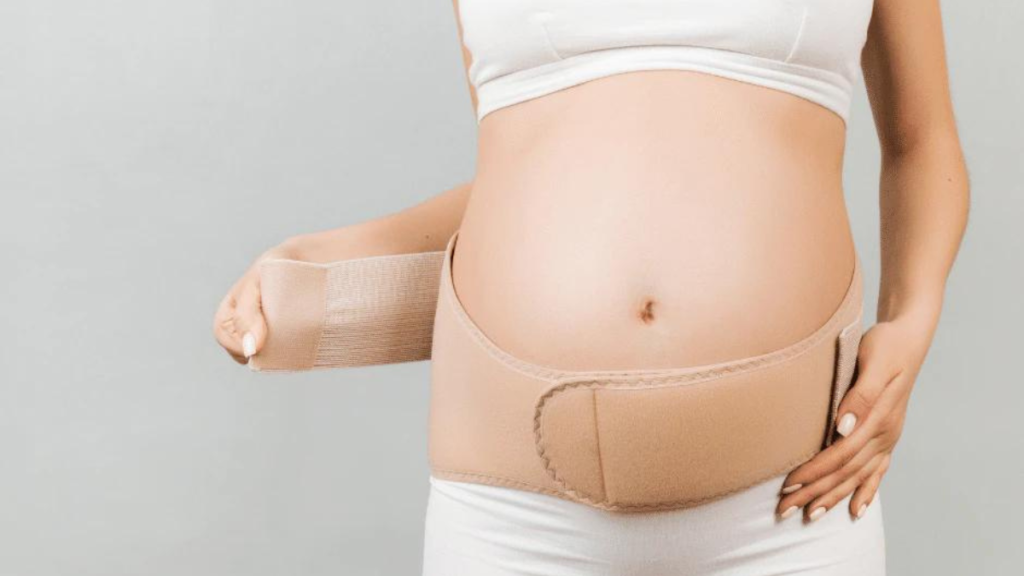
First, what are some of the possible benefits of wearing an abdominal binder after delivering a baby?
What are some of the possible disadvantages of wearing an abdominal binder?
The real question is …are they helpful? What does the research say ? According to two small scale randomized control trials, wearing an abdominal binder post planned cesarean does decrease postpartum pain and distress (2, 3). One “systematic review and meta-analysis of randomized controlled trials [ concluded that] : The abdominal binder could be an effective, simple, non-pharmacological option of relieving pain and distress after CD” (4). Considering this information, wearing an abdominal binder post scheduled cesarean may be helpful for pain.
Unfortunately, the data is lacking on the benefit of wearing an abdominal binder post vaginal birth, and wearing one may even cause harm due to the increased intra-abdominal and pelvic pressure. Women who have had a vaginal birth should exercise caution when wearing an abdominal binder if they pushed for an extended period of time, had a 3rd or 4th degree laceration, have known pelvic organ prolapse, or experience pain or discomfort with use.
It’s important to note that all of these studies were conducted on a small scale and included scheduled cesareans only. Overall, the data is limited on the benefits of wearing an abdominal binder post c-section but according to the information available does appear to be helpful. The data on the benefits for vaginal deliveries is lacking and using a binder could disrupt recovery. One should also consider that the modern day abdominal binders would be very different from the traditional cultural practice of belly binding. Traditional belly binding practices would’ve included skilled application, rest, nurturing, and care of the new mother and not be done with the intention of having the new mamas’ bodies bounce back quicker and faster after birth.
Each individual that is considering using a binder should look at the research, consider their situation, overall goals for use, and finally discuss with their care provider as to what might be the best solution. Women who experience pelvic floor dysfunction post-birth should consider seeing a pelvic floor physical therapist for more comprehensive treatment.
© 2023 All rights reserved Baby & Toddler - part of parent promotions